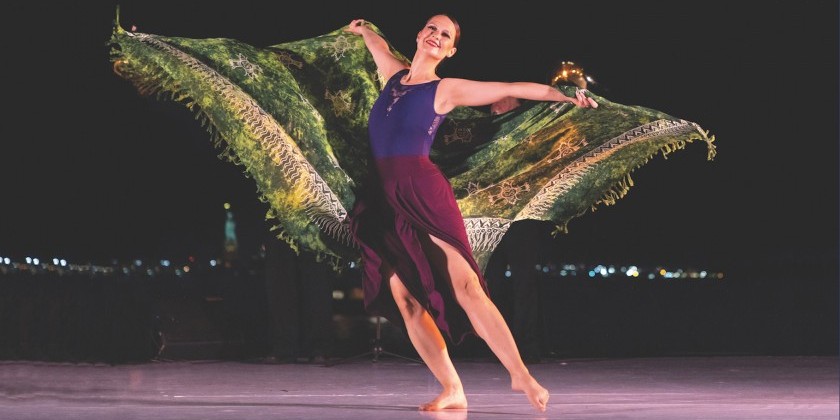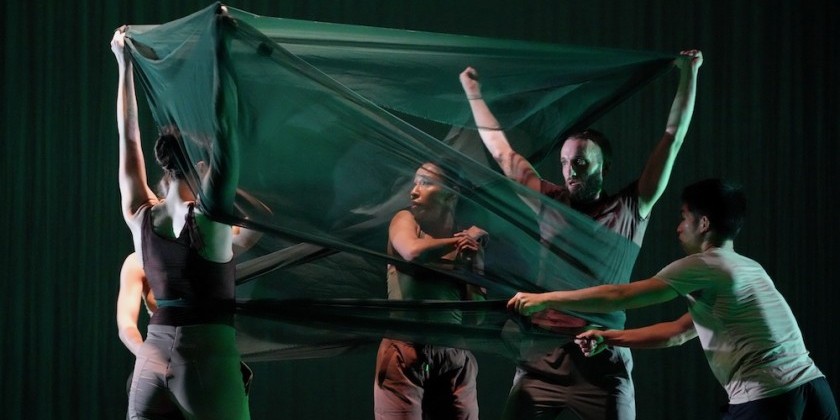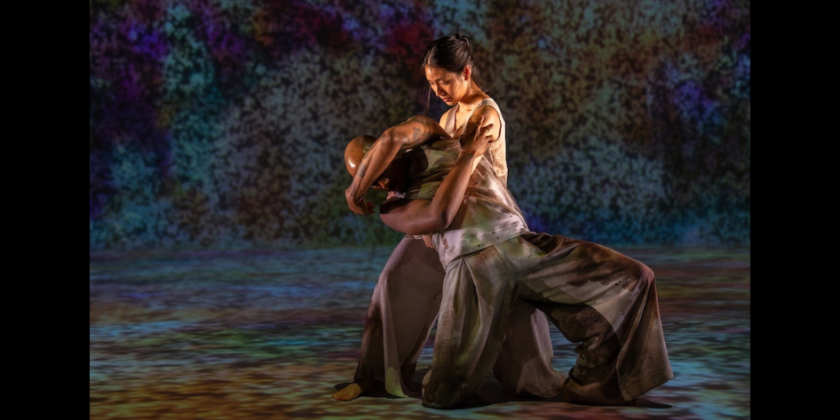Impressions of A Canary Torsi I Yanira Castro's "Paradis"

Yanira Castro | A Canary Torsi’s "Paradis"
Presented by New York Live Arts on June 8th through June 10th, 2012
at the Brooklyn Botanical Gardens in Brooklyn, New York
Dancers: Peggy H. Cheng, Daniel Clifton, Simon Courchel, Shayla-Vie Jenkins, Luke Miller, Peter Schmitz, Pamela Vail, Darrin Wright, Kimberly Young
Sound Design, Installation, and Interactive Composition: Stephan Moore
Music performed by Michael Dauphinais (piano)
Paradis originally premiered in June 2011 at the Brooklyn Botanical Gardens and was the first site-specific dance piece to take place in the Brooklyn Botanical Gardens
Theodora Boguszewski for The Dance Enthusiast
The light fades slowly over the Brooklyn Botanical Gardens, arguably one of the most magical spots in New York. Separated from the sweaty masses, we are in a natural paradise, a peaceful oasis of pristine beauty and calm. Being a newbie to site-specific performances I am a little out of my element. Where is the stage? Where are the performers? The serenity of dusk settling over the gardens puts me at ease, however, and I allow myself to be guided with the others through this “new” experience.
Excited and slightly restless, we are ushered by three assistants to the Desert House where the piece begins. As we surround the dusty cactus-filled enclosure we see a white-clad figure, Peter Schmitz, standing alone among the cacti. (I am reminded of observing a specimen trapped under glass.) Schmitz’s schizophrenic performance and expansion on Castro’s Wilderness ,a movement installation presented at the Invisible Dog Art Center in November 2010, brilliantly unnerves. First he appears as a burned-out Broadway dancer manically practicing his routine to no avail; then he is Adam in the Garden of Eden, hungrily plucking and devouring the forbidden apple; he becomes Frankenstein the mad scientist and God, creator of Adam; and finally he morphs into Frankenstein’s monster: grunting and drooling while stumbling along a circular path. As the dancer’s mania progresses, we discover that what is terrifying in the wilderness is not located in the desert or its prickly cacti, but rather in the crevices of the human psyche.
 |
| Paradis choreographed Yanira Castro. Photo © Kevin Kwan |
Shmitz’s performance is accompanied by the dissonantly abrasive tinkling of piano keys coming in from walkie-talkies held by 3 ushers. We find out later that the source of the music is pianist Michael Dauphinais who, situated in the distant Cherry Esplanade, is playing notes generated by a computer program that tracks the audience’s movement. We are influencing the performance without even realizing it!
Leaving Shmitz crumpled like a smashed cockroach, we are guided along a winding path to the Cherry Esplanade. White figures flash through the forest as we go. Are they human or shiny molecules? They blend perfectly with the structured chaos of the nature that surrounds us. We notice Dauphinais peacefully playing from the computer. His presence amongst the rows of trees also seems perfectly natural. Later, it becomes apparent that the flashing shapes we observed earlier are people, And how beautiful they are! As they approach us, I am tempted to join their Isadora Duncan-esque runs and leaps through the grass.
 |
| Paradis choreographed by Yanira Castro; Photo © Kevin Kwan |
In a canary torsi’s Paradis, we are invited to participate in the world created by the artists before us, and the invitation is so appealing we must accept. Unexpectedly, their paradise feels more like home than a thrilling or fantastical other space. In this work, Castro and her performers re- introduce us to the most treasured elements of our human experience, including: individuality, intimacy, community, and artistry.
Throughout the beautiful journey, our preconceptions of performance are challenged albeit in a gentle, easy manner. Constantly playing with the boundaries of distance and intimacy, Castro takes the transportive nature of dance to a new level.
 |
| Paradis choreographed by Yanira Castro; Photo Charles Houghton |
The conclusion of Paradis is perfectly intimate. We envelop the dancers as they pair up to perform, at once, four duets, which are different in movement but similar in nature. It feels as if we are peering through the windows of four households, watching couples interact with the inextricable closeness of people who have spent many years together. The sensation of intimacy and tenderness lingers as the dancers guide us to the piano, where we are instructed to sing together...
“In the sun, in the snow, if you lead then I will follow, who is right, who is wrong, in leading our own lives.”
I have never felt so happy to be singing among strangers –this gathering of voices and souls is supportive and uplifting. Yes, this must be Paradise, and it belongs to us as much as to the performers, who have slipped away into the darkness without our noticing, enrapt as we are in this moment of celebration.
.jpg) |
| Paradis choreographed by Yanira Castro; Photo © Kevin Kwan |













